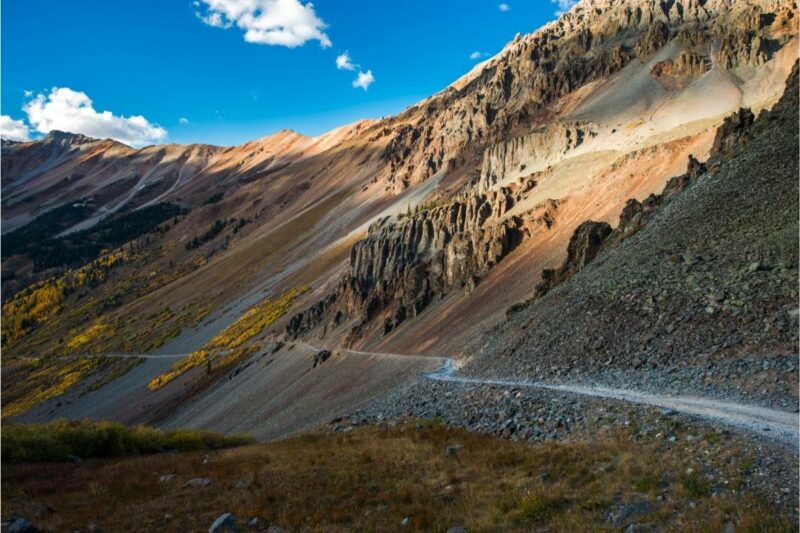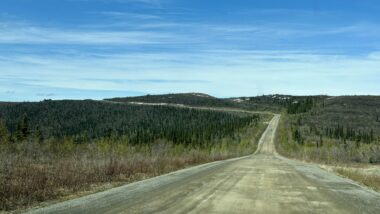Table of Contents Show
Utah is a scenic state you must add to your next road trip. It has something for everyone, including intriguing ghost towns and historic ruins.
Are you ready to see some of the most incredible abandoned places in Utah? We found ten that you need to see. From creepy to oddly artful, you’ll enjoy exploring these places.
Keep reading to find out why people abandoned these places in Utah and which ones you can visit. Then, get your trip planner out to mark them on your route!
How Do You Find Abandoned Places?
Some websites help travelers locate abandoned places. Abandoned Places is an old website that no longer updates, but it’s an excellent place to start. Abandoned America is a website by documentarian Matthew Christoper.
Urbex combines exploring urban and abandoned places. Another recommendation is Abandoned Central for those who want to explore abandoned buildings.

Why Did People Abandon These Places in Utah?
People abandon places for many reasons. Some buildings that were in one family for generations now sit empty because the owners have passed away. Others might be empty due to businesses shutting down and the owners moving on.
Some are ruins from thousands of years ago or former mining towns. The history of abandoned places in Utah is unique and diverse.
Are Abandoned Places in Utah Haunted?
Some people believe abandoned places have ghosts. Whether or not ghosts haunt abandoned places in Utah is up to your perspective. It’s a topic with various opinions.
However, we can say that some of the sites on this list are bone-chillingly creepy.

10 Abandoned Places in Utah You Need to See
We found ten abandoned places in Utah that we recommend checking out. From towns to buildings, each tells a story. Let’s peek behind the curtain!
Thistle, Utah
Location: Thistle is 23 miles southeast of Provo, UT
About: Thistle, Utah, is a ghost town in Spanish Fork Canyon. It was an industrial town during the locomotive era, and it serviced trains for the Denver and Rio Grande Western Railroad.
In 1983, a giant mudslide dammed the Spanish Fork River in Thistle, causing the waterway to bury the town. While you can’t visit it as it is private property, you can still see a few rooftops of the submerged houses from a distance.
Anasazi Ruins
Location: Anasazi Ruins are in Bluff, Utah, in the state’s southeast corner
About: The Anasazi Ruins are dwellings and buildings the Puebloan Native Americans created, which some previously knew as the Anasazi. They farmed the region about 2,000 years ago.

You can hike to observe the 16-room Anasazi house near Bluff, UT. It’s a beautiful walk with scenic views as you imagine what it would have been like to live there thousands of years ago. You need a Navajo Nation permit to hike the trail, and you must strictly follow all rules.
Cottonwood Paper Mill
Location: 6900 S Big Cottonwood Canyon Rd, Cottonwood Heights, UT 84121
About: The Cottonwood Paper Mill is an empty stone structure near the mouth of Big Cottonwood Canyon. The paper mill was active from 1850 to 1893 when a fire destroyed it.
In 1927, J.B. Walker restored it as a recreational center. However, Cottonwood Heights condemned the mill in 2005 due to earthquake damage, and it remains vacant. It is not accessible to the public.
Silver City, Utah
Location: Silver City is at the mouth of Dragon Canyon, approximately 90 miles southwest of Salt Lake City, Utah, and near Eureka.
About: Silver City, Utah, was a silver mining town. It thrived until 1890 when water overflowed most of the mines. The town slowly began to close until Jesse Knight opened an Ore Sampling Mill and built the East Tintic Railroad.
But in 1915, he shut down the mill. Today, it’s a ghost town that you can visit. However, there’s not much remaining, so be sure to respect private property signs and not attempt to enter any old mines.
Tintic Standard Reduction Mill
Location: Genola, Utah
About: The Tintic Standard Reduction Mill is a former refinery on the west slope of Warm Springs Mountain. It dates to 1920 and was open from 1921 to 1925. The mill processed silver and reduced high amounts of sulfide in raw ore. It became obsolete in 1925 due to the changes in silver processing.
Therefore, the mill remains an abandoned place in Utah. People like to go near it for photos, but the Utah government does not allow trespassing, and there could be traces of lead or arsenic on-site.
Ophir, Utah
Location: In the southwest portion of metropolitan Salt Lake City.
About: Ophir, Utah, had a population of 23 in 2000. Settlers found silver and lead there in 1870. In 1911, miners discovered zinc in one of the ores.

You can visit the historic mining town and look inside some buildings. The town is open for self-guided tours. While some people still live in the surrounding area, the historical site has the characteristics of a ghost town.
Ogden Exchange Building
Location: 600 Exchange Rd, Ogden, UT 84401
About: The Ogden Exchange Building is a historical landmark. The building was in the Ogden Union Stockyards, dating to 1931. People held livestock sales here until the late 1960s. The Exchange Building had 50 offices, a lobby, a fountain lunch counter, a barber shop, and a shower room for stockyard and railroad employees.
Keep in Mind: Are you looking for ghost towns to visit in Colorado? We’ve got you covered.
After declining stockyards, they transferred the building to a community mental health facility in 1974. However, it shut down in 1987 and became a target for vandals. The building is not open to the public.
Grafton, Utah
Location: Just south of Zion National Park in Washington County, Utah.

About: Grafton, Utah, is a ghost town. Settlers established the town in 1859, and the last residents left in 1944. They grew cotton, wheat, and alfalfa. The area became increasingly challenging to make a livelihood due to floods, skirmishes, and occasional harsh winters.
You can visit the town near the Virgin River, south of the boundary of Zion National Park. A group of wood buildings and a well-preserved cemetery with graves dates to the 1860s.
The Beehive Kilns
Location: Frisco, Utah
About: The Beehive Kilns, or Charcoal Kilns, are in the ghost town of Frisco, Utah. Miners opened a silver mine in 1875, and the town was open for only ten years due to a mine collapse.
Keep in Mind: If these Utah National Parks aren’t on your bucket list, here’s why they need to be.

However, some beehive-looking structures remain. They were charcoal kilns workers used for smelting, which is when you extract precious metals from ore. The kilns were in use during the late 1800s.
Today, you can look inside the five remaining beehives, and you may still smell the charcoal smoke.
Iosepa Ghost Town
Location: Skull Valley, about 75 miles southwest of Salt Lake City, Utah.
About: The Iosepa Ghost Town was once home to over 200 Polynesian members of The Church of Jesus Christ of Latter-day Saints from 1889 to 1917. After the residents abandoned it, some building foundations remain, and people still maintain a cemetery.
Most residents returned to Hawaii. You can visit the ghost town to see what’s left and respectfully visit the cemetery.
What Can You Learn from These Abandoned Places in Utah?
Abandoned places in Utah have an intriguing history. While you can only appreciate many from a distance, there’s something about witnessing what was once a time of building and community.
We highly recommend checking out some of these places while in Utah. You can find more resources online about their histories and how they affected the state and surrounding towns.
Which place on our list will you visit first?






